Deck & Commander Strategies

Lathril, Blade of the Elves
Generate numerous elf tokens that are unblockable, leveraging commander damage to close out games quickly while maintaining constant board presence and pressure.
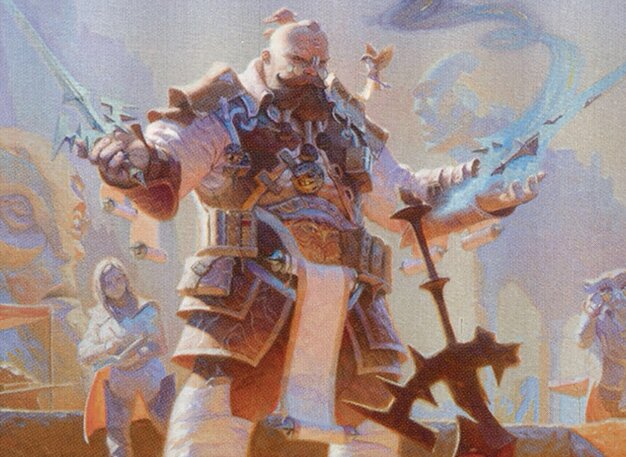
Osgir, the Reconstructor
Fill the graveyard with artifacts and repeatedly recur them for value, enabling a resilient board presence and resource advantage through artifact synergy.
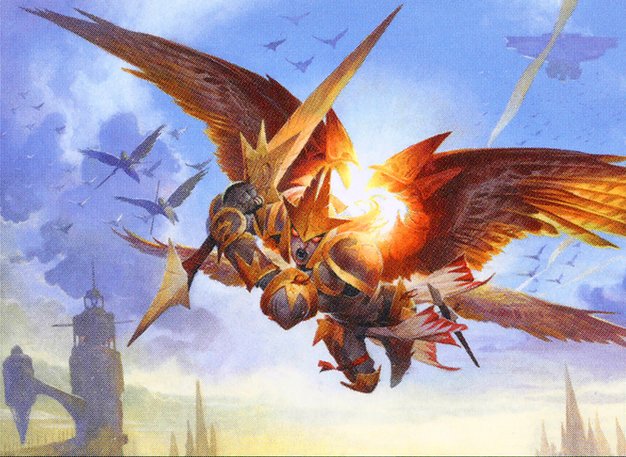
Feather, the Redeemed
Go wide with tokens and gain value by repeatedly casting instants and sorceries from the graveyard, generating card advantage and board control.

Veyran, Voice of Duality
Cast numerous cantrips and spells targeting creatures to double triggers, drawing cards and creating a large, aggressive board to overwhelm opponents.
Gameplay Insights
- 1
The use of Blood Moon and Portal to Phrexia disrupted opponents' mana bases and forced sacrifices, creating a strategic tempo advantage.
- 2
Veyran's interaction with Double Vision and multiple triggered abilities on Stormchaser Drake created a significant card draw engine to refill the hand and maintain pressure.
- 3
Lathril's unblockable elves continuously pressured opponents with commander damage, forcing them to respond or face heavy damage.
- 4
Osgir's ability to repeatedly recur artifacts from the graveyard provided steady resource advantage, allowing flexible responses to board states.
- 5
Feather's deck capitalized on recurring instants and sorceries to generate tokens and value, maintaining resilience through repeated spells.
Notable Cards
-

Blood Moon
-
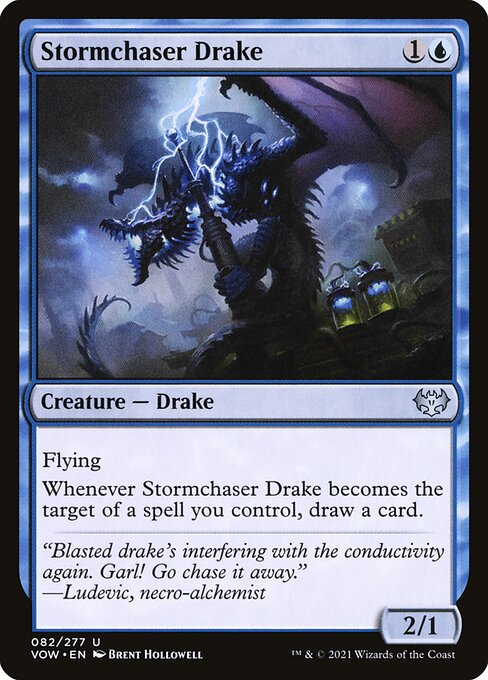
Stormchaser Drake
-
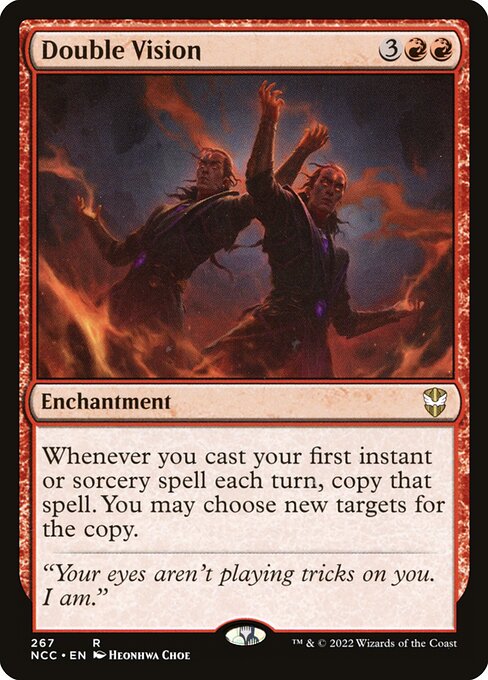
Double Vision
-

Mana Crypt
-
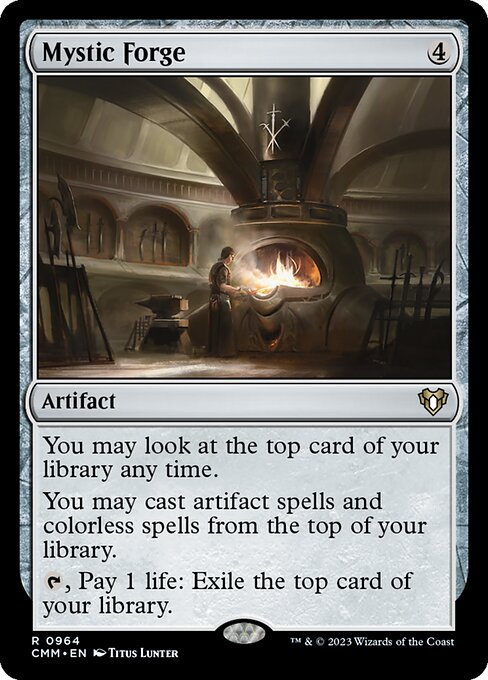
Mystic Forge
-
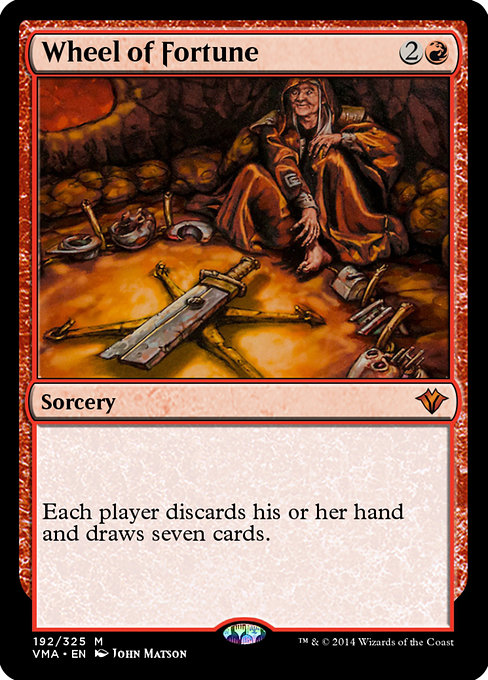
Wheel of Fortune
-

Skullclamp
Gameplay Summary
The game began with players ramping and developing their board states, each using their commanders' strengths.
Feather the Redeemed's player focused on casting spells that generate tokens and recurring value from the graveyard, while Lathril, Blade of the Elves aimed to overwhelm opponents with unblockable elf tokens and commander damage.
Veyran, Voice of Duality's player utilized numerous cantrips and spells that target creatures to draw cards and create a large board presence, taking advantage of doubled triggers.
Osgir, the Reconstructor's player concentrated on filling the graveyard with artifacts and recurring them to generate value and board presence. A key turning point was the casting of Blood Moon and Portal to Phrexia by one player, forcing opponents to sacrifice creatures and disrupting many strategies.
Veyran's player executed a powerful combo with double vision and multiple triggers on Stormchaser Drake, drawing a large number of cards and refilling their hand, setting up for a major offensive.
Meanwhile, Lathril's player continued creating unblockable elf tokens and pressuring opponents with commander damage.
Osgir's artifact recursion engine kept providing steady value, while Feather's token generation and graveyard recursion remained a consistent threat.
The game demonstrated high-powered interactions, with players carefully managing aggression, board wipes, and card advantage to position themselves for the win.


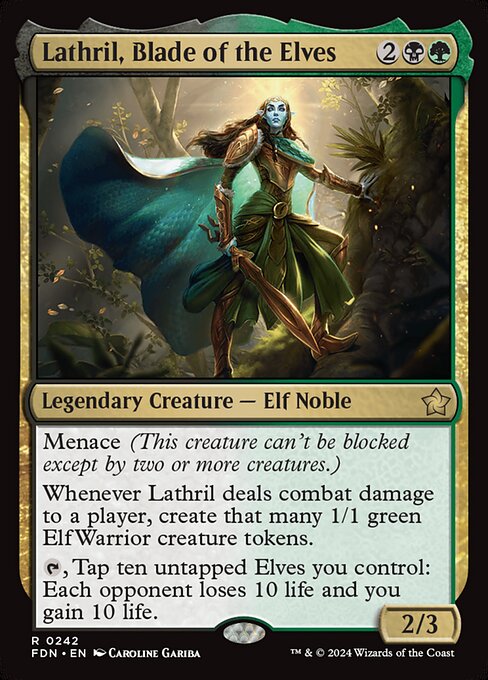





















![Season Finale Fan Special [Commander VS 305] | Magic: the Gathering Commander Gameplay thumbnail](https://i.ytimg.com/vi/4VCbfC4ADDk/sddefault.jpg)



















